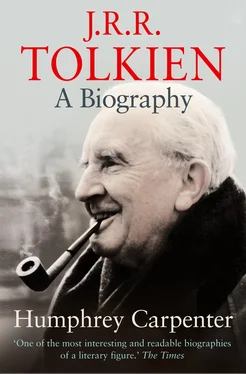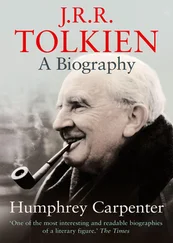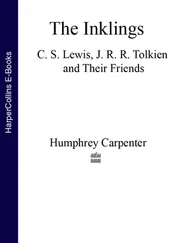Arthur Reuel Tolkien and Mabel Suffield were married in Cape Town Cathedral on 16 April 1891, and spent their honeymoon in a hotel at nearby Sea Point. Then came an exhausting railway journey of nearly seven hundred miles to the capital of the Orange Free State, and the house which was to be Mabel’s first and only home with Arthur.
Bloemfontein had begun life forty-five years earlier as a mere hamlet. Even by 1891 it was of no great size. Certainly it did not present an impressive spectacle to Mabel as she and Arthur got off the train at the newly built railway station. In the centre of the town was the market square where the Dutch-speaking farmers from the veldt trundled in aboard great ox-wagons to unload and sell the bales of wool that were the backbone of the State’s economy. Around the square were clustered solid indications of civilisation: the colonnaded Parliament House, the two-towered Dutch Reformed church, the Anglican cathedral, the hospital, the public library, and the Presidency. There was a club for European residents (German, Dutch, and English), a tennis club, a law court, and a sufficiency of shops. But the trees that had been planted by the first settlers were still sparse, and the town’s park was, as Mabel observed, no more than about ten willows and a patch of water. Only a few hundred yards beyond the houses was the open veldt where wolves, wild dogs, and jackals roamed and menaced the flocks, and where after dark a post-rider might be attacked by a marauding lion. From these treeless plains the wind blew into Bloemfontein, stirring the dust of the broad dirt-covered streets. Mabel, writing to her family, summed up the town as ‘Owlin’ Wilderness! Horrid Waste!’
However for Arthur’s sake she must learn to like it, and meanwhile the life she found herself leading was by no means uncomfortable. The premises of the Bank of Africa, in Maitland Street just off the market square, included a solidly built residence with a large garden. There were servants in the house, some black or coloured, some white immigrants; and there was company enough to be chosen from among the many other English-speaking residents, who organised a regular if predictable round of dances and dinner-parties. Mabel had much time to herself, for when Arthur was not busy in the bank he was attending classes to learn Dutch, the language in which all government and legal documents were worded; or he was making useful acquaintances in the club. He could not afford to take life easy, for although there was only one other bank in Bloemfontein, this was the National, native to the Orange Free State; whereas the Bank of Africa of which Arthur was manager was an outsider, a uitlander, and was only tolerated by a special parliamentary decree. To make matters worse, the previous manager of the Bank of Africa had gone over to the National, and Arthur had to work doubly hard to make sure that valuable accounts did not follow him. Then there were new projects in the locality which might be turned to the advantage of his bank, schemes connected with the Kimberley diamonds to the west or the Witwatersrand gold to the north. It was a crucial stage in Arthur’s career, and, moreover, Mabel could see that he was intensely happy. His health had not been consistently good since he arrived in South Africa, but the climate seemed to suit his temperament; seemed, as Mabel noticed with the faintest apprehension, positively to appeal to him, whereas after only a few months she herself came to dislike it heartily. The oppressively hot summer and the cold, dry, dusty winter tried her nerves far more than she liked to admit to Arthur, and ‘home leave’ seemed a very long way off, for they would not be entitled to visit England until they had been in Bloemfontein for another three years.
Yet she adored Arthur, and she was always happy when she could entice him from his desk and they could go for walks or drives, play a game of tennis or a round of golf, or read aloud to each other. Soon there was something else to occupy her mind: the realisation that she was pregnant.
On 4 January 1892 Arthur Tolkien wrote home to Birmingham:
My dear Mother.
I have good news for you this week. Mabel gave me a beautiful little son last night (3 January). It was rather before time, but the baby is strong and well and Mabel has come through wonderfully. The baby is (of course) lovely. It has beautiful hands and ears (very long fingers) very light hair, ‘Tolkien’ eyes and very distinctly a ‘Suffield’ mouth. In general effect immensely like a very fair edition of its Aunt Mabel Mitton. When we first fetched Dr Stollreither yesterday he said it was a false alarm and told the nurse to go home for a fortnight but he was mistaken and I fetched him again about eight and then he stayed till 12.40 when we had a whisky to drink luck to the boy. The boy’s first name will be ‘John’ after its grandfather, probably John Ronald Reuel altogether. Mab wants to call it Ronald and I want to keep up John and Reuel…
‘Reuel’ was Arthur’s own second name, but there was no family precedent for ‘Ronald’. This was the name by which Arthur and Mabel came to address their son, the name that would be used by his relatives and later by his wife. Yet he sometimes said that he did not feel it to be his real name; indeed people seemed to feel faintly uncomfortable when choosing how to address him. A few close school-friends called him ‘John Ronald’, which sounded grand and euphonious. When he was an adult his intimates referred to him (as was customary at the time) by his surname, or called him ‘Tollers’, a hearty nickname typical of the period. To those not so close, especially in his later years, he was often known as ‘J.R.R.T.’ Perhaps in the end it was those four initials that seemed the best representation of the man.
John Ronald Reuel Tolkien was christened in Bloemfontein Cathedral on 31 January 1892, and some months later he had his photograph taken in the garden of Bank House, in the arms of the nurse who had been engaged to look after him. His mother was clearly in excellent health, while Arthur, always something of a dandy, posed in a positively jaunty manner in his white tropical suit and boater. Behind stood two black servants, a maid and a house-boy named Isaak, both looking pleased and a little surprised to be included in the photograph. Mabel found the Boer attitude to the natives objectionable, and in Bank House there was tolerance, most notably over the extraordinary behaviour of Isaak, who one day stole little John Ronald Reuel and took him to his kraal where he showed off with pride the novelty of a white baby. It upset everybody and caused a great turmoil, but Isaak was not dismissed, and in gratitude to his employer he named his own son ‘Isaak Mister Tolkien Victor’, the last being in honour of Queen Victoria.
There were other disturbances in the Tolkien household. One day a neighbour’s pet monkeys climbed over the wall and chewed up three of the baby’s pinafores. Snakes lurked in the wood-shed and had to be avoided. And many months later, when Ronald was beginning to walk, he stumbled on a tarantula. It bit him, and he ran in terror across the garden until the nurse snatched him up and sucked out the poison. When he grew up he could remember a hot day and running in fear through long, dead grass, but the memory of the tarantula itself faded, and he said that the incident left him with no especial dislike of spiders. Nevertheless, in his stories he wrote more than once of monstrous spiders with venomous bites.
For the most part life at Bank House maintained an orderly pattern. In the early morning and late afternoon the child would be taken into the garden, where he could watch his father tending the vines or planting saplings in a piece of walled but unused ground. During the first year of the boy’s life Arthur Tolkien made a small grove of cypresses, firs, and cedars. Perhaps this had something to do with the deep love of trees that would develop in Ronald.
Читать дальше












